Import and Export
Learn how to import and export data in Bika.ai using .bika files, Excel, and incremental updates. Supports full scenario migration, backups, and seamless cross-team data transfer.
Import and Export
In this section, we discuss how to import and export resource nodes, and how to use the dedicated .bika file format for data transfer and backup. The implementation principles and usage methods for each part are explained below.
.bika File
What is a .bika file?
.bikais Bika.ai platform's agent packaging format, featuring two major characteristics: comprehensiveness and portability:
Comprehensive Support
Can package all of the following types of node resources:
- Database
- Automation
- Form
- Mirror
- Dashboard
- Document
- File
Portability Advantages
- Single file encapsulation of complete agents
Package an entire order management system with one click, including forms, workflows, and dashboards for easy migration
- Easy cross-team sharing and migration
Share a developed customer management solution directly with partners who can use it immediately after importing
- Ensure data and configuration integrity
When exporting a CRM system, customer and order relationships are automatically preserved, ensuring data completeness
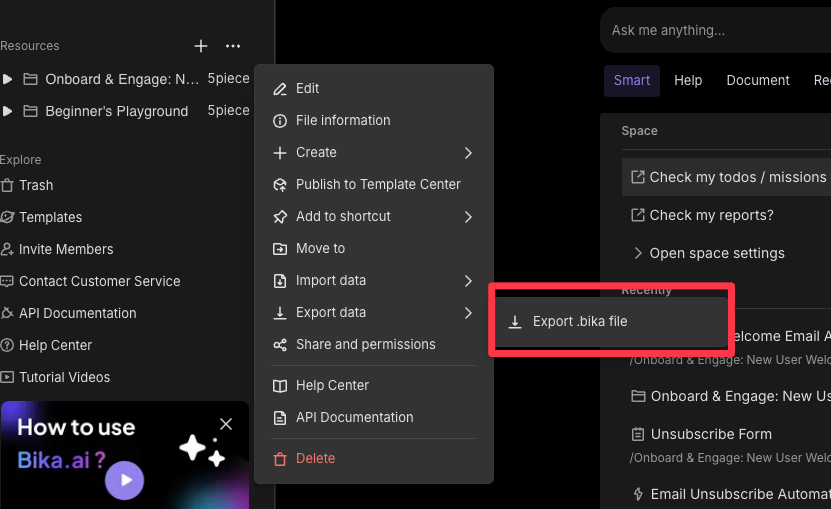
Data Import
Bika.ai offers various flexible data import methods to meet business needs in different scenarios. You can use .bika files for complete business scenario imports or Excel for routine batch data imports.
Template Import (.bika file)
Imagine you're deploying a customer management system for a chain enterprise. The headquarters has built a comprehensive customer management solution including custom field configurations, workflows, databases, etc.
In this case, you only need to export the headquarters' solution as a .bika file, then import it into each branch company's system to quickly complete the deployment, ensuring all branches use unified business processes. Through this simple import operation, you can save significant time on repetitive configurations while ensuring business standard consistency.
Steps:- Click the import button in the resource list on the left
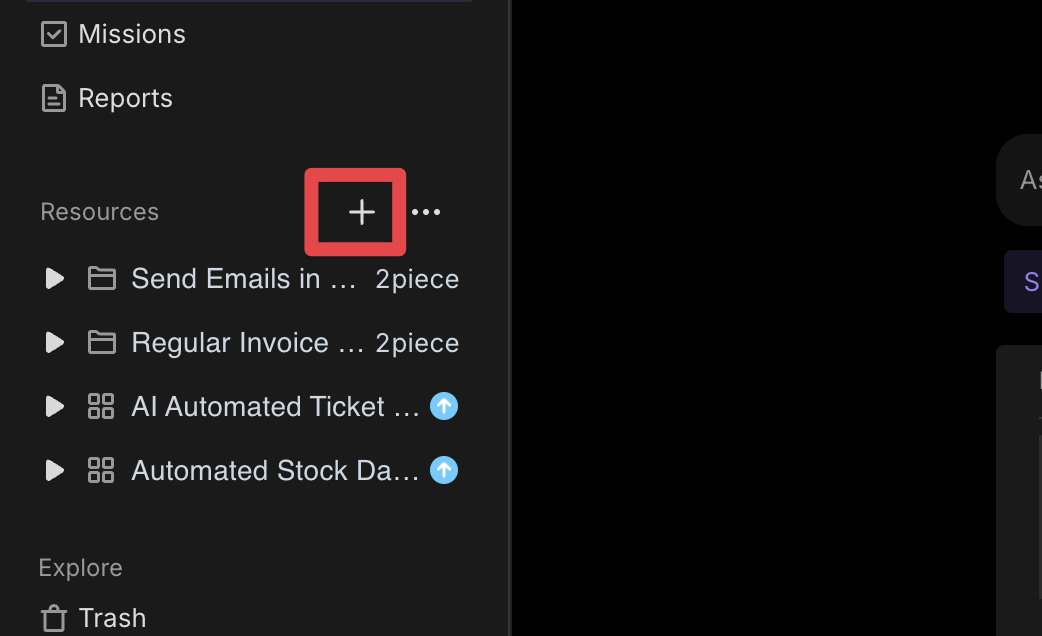
- Select "Import Data," choose "Import from .bika file," and click "Create"
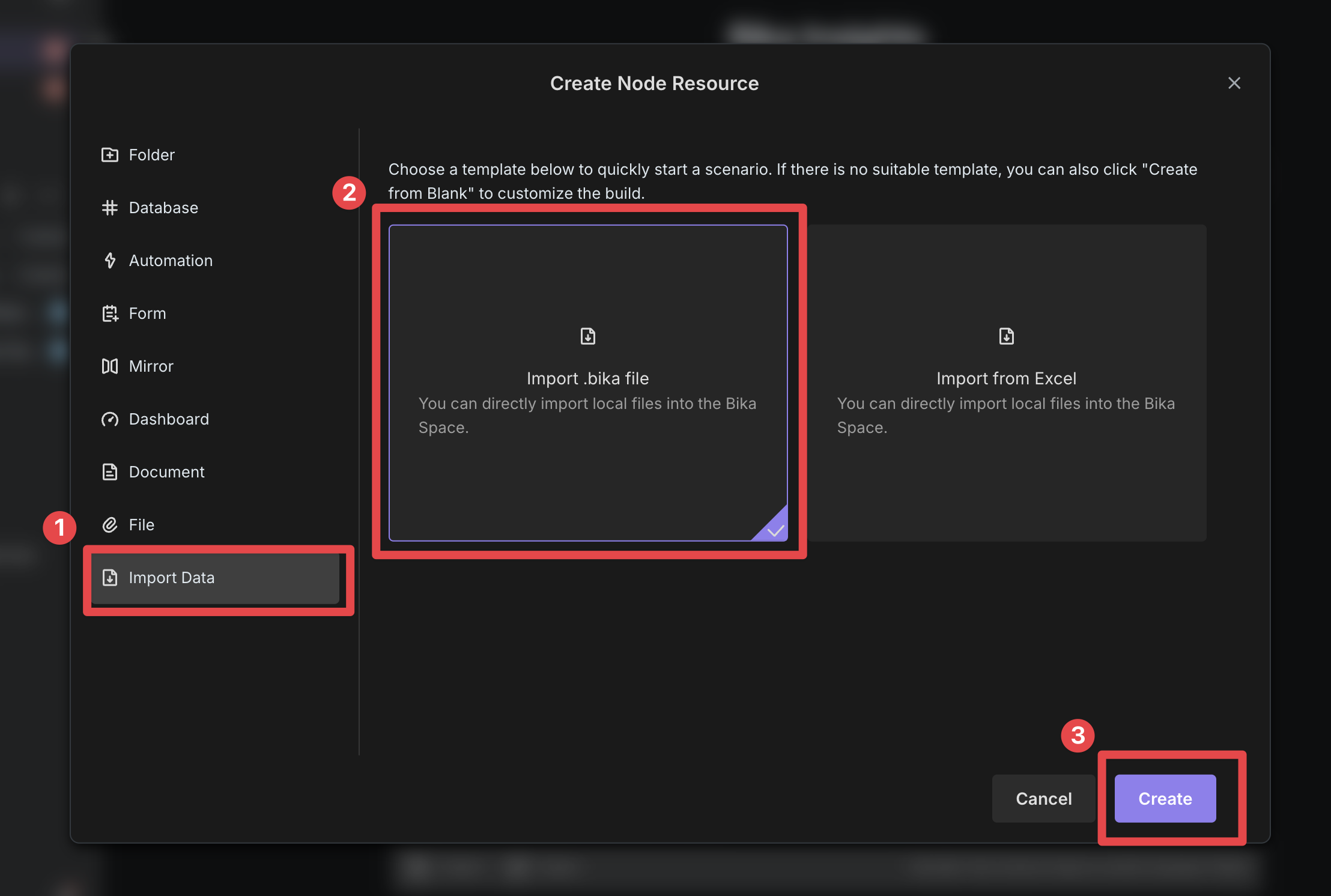
- Upload the .bika file you need to import
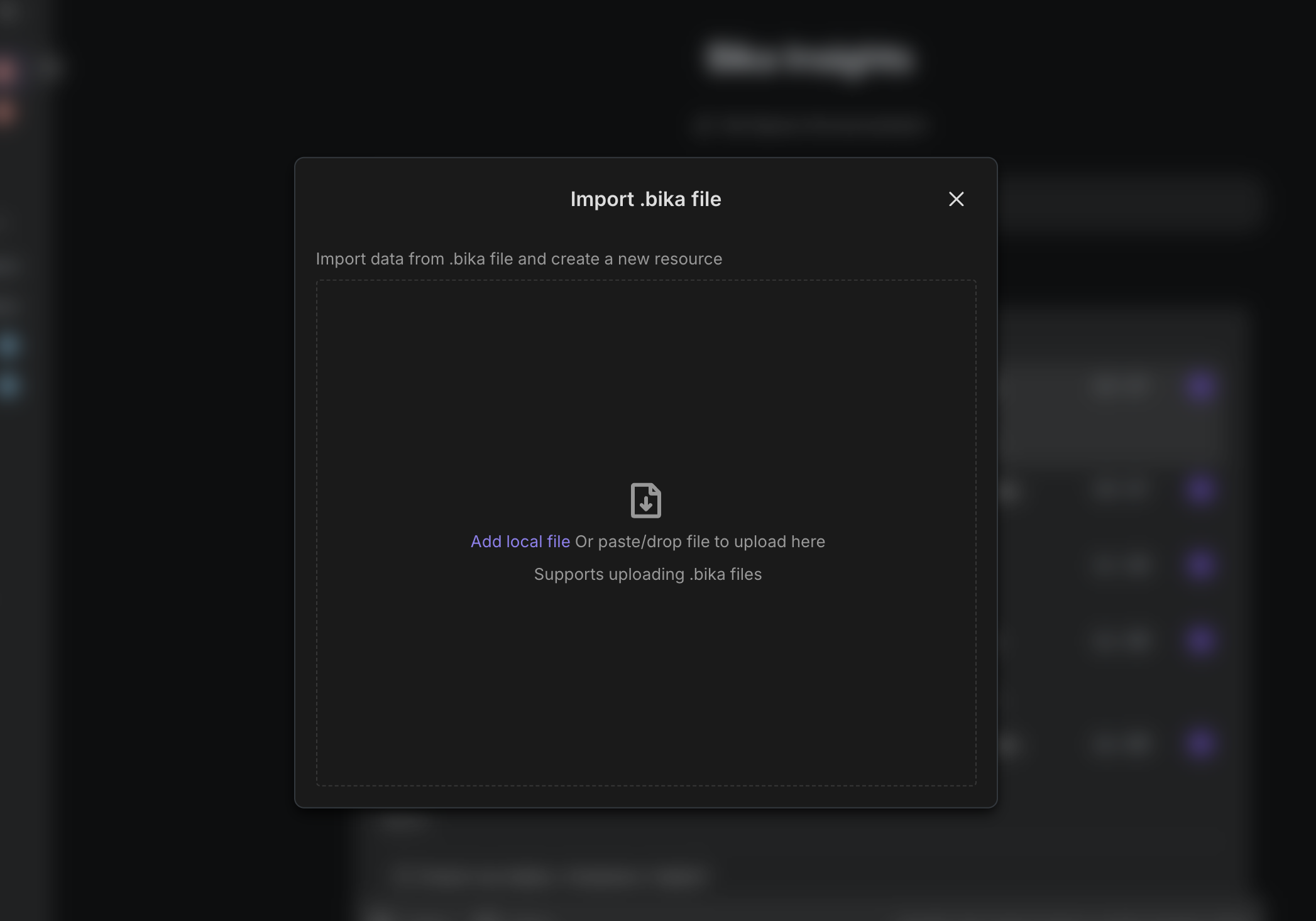
- Wait for the import to complete
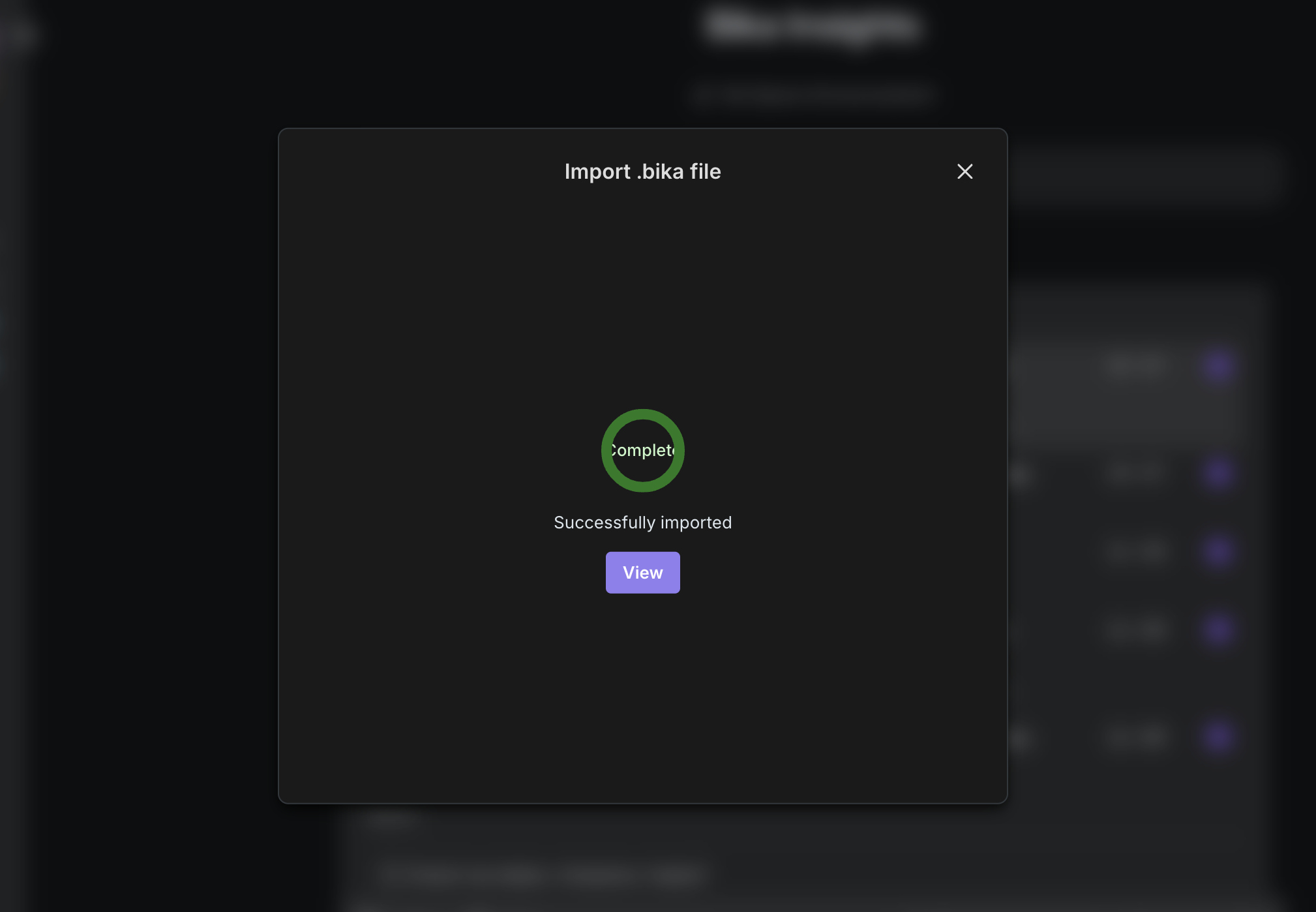
Excel Data Import (.xlsx/.csv)
In daily operations, Excel import is the most common method for batch data processing. For example, when the marketing department collects an Excel spreadsheet containing information on hundreds of potential customers that needs to be entered into the system. Through the Excel import function, you can quickly import this data into the corresponding database.
Steps:- Click the import button in the resource list on the left
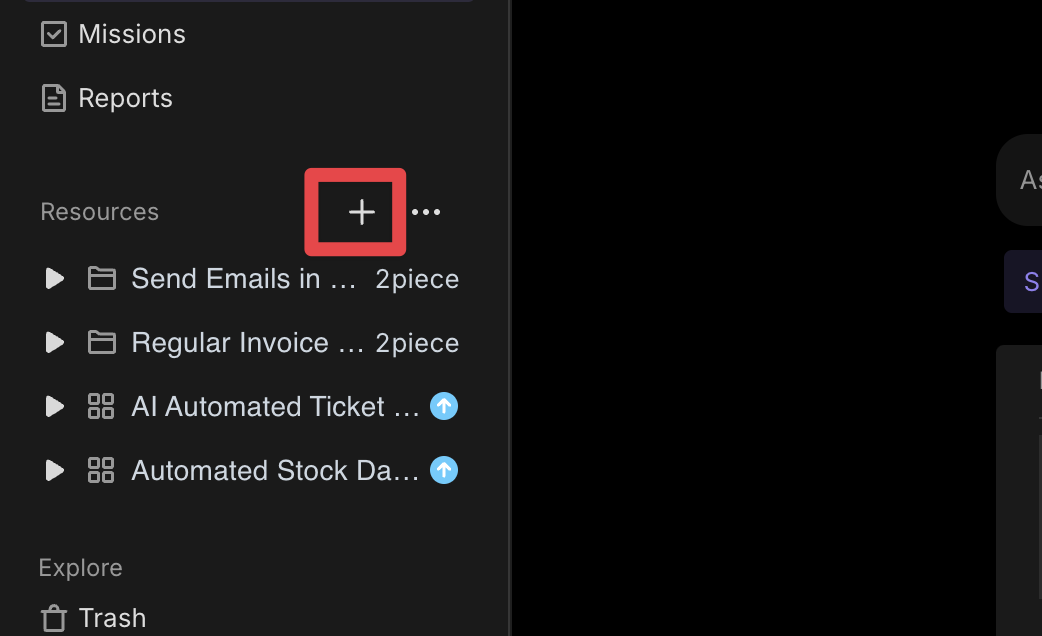
- Select "Import Data," choose "Import from Excel," and click "Create"
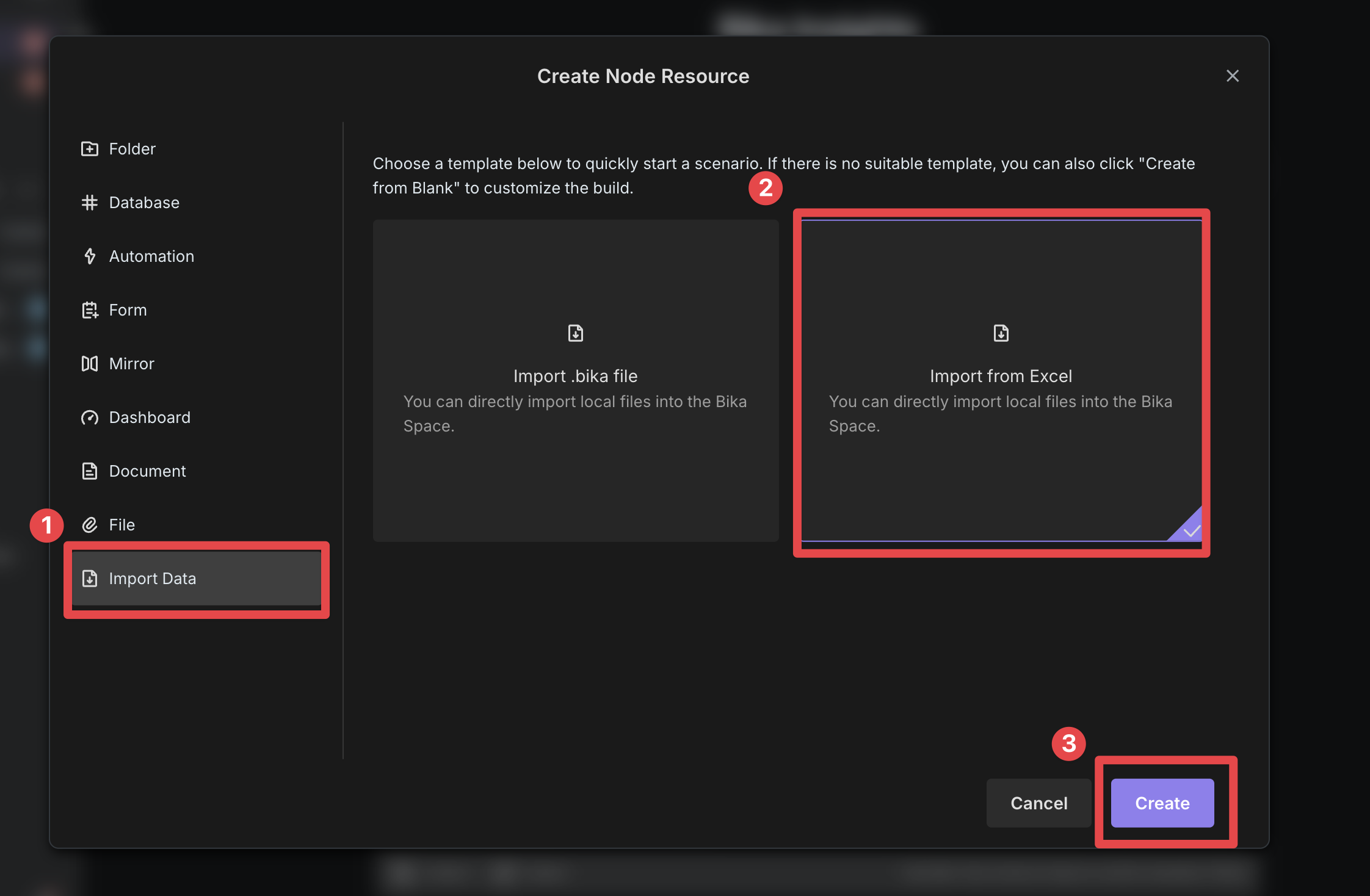
- Upload the Excel file you need to import (.xlsx/.csv)
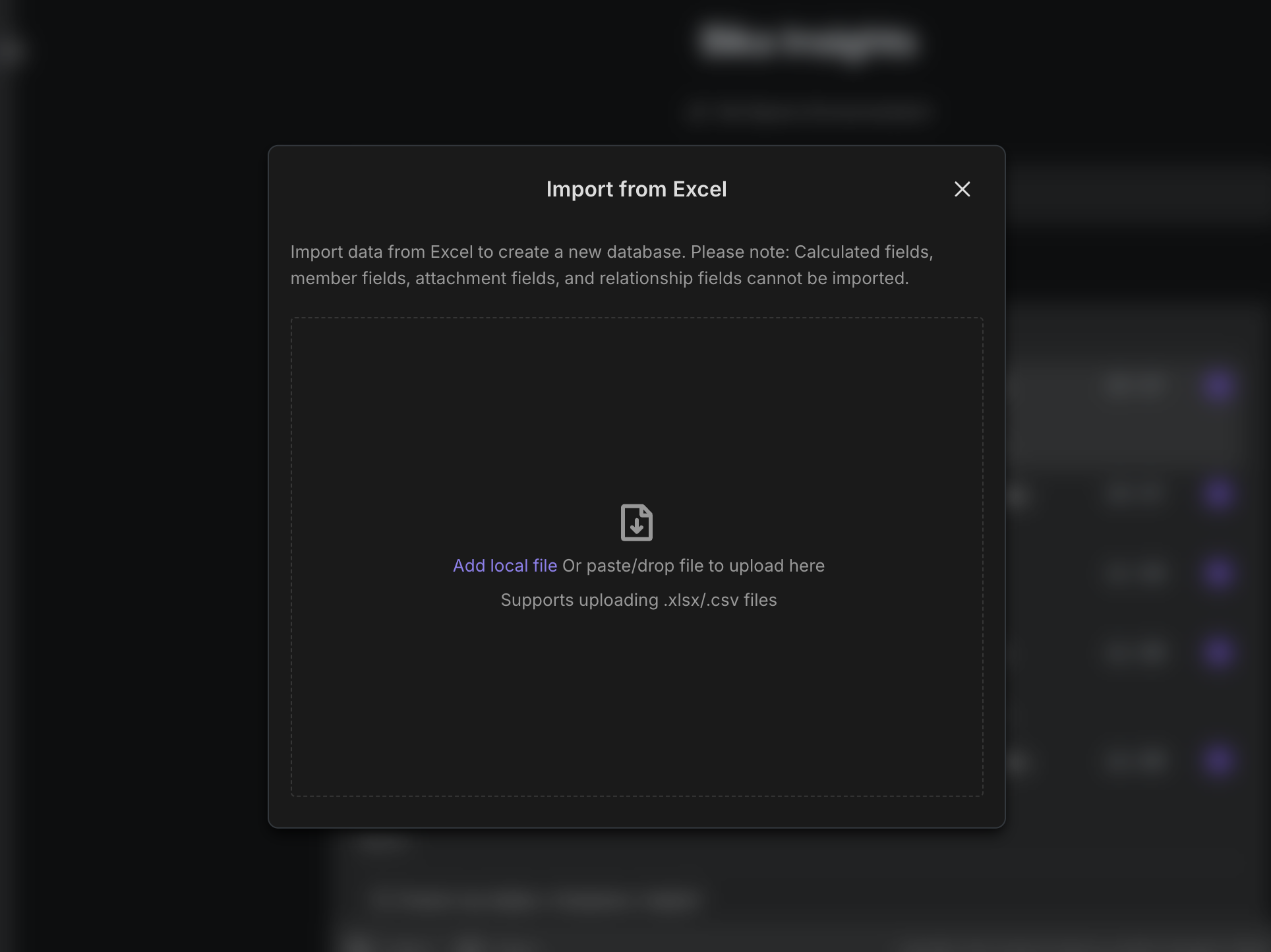
- Wait for the import to complete
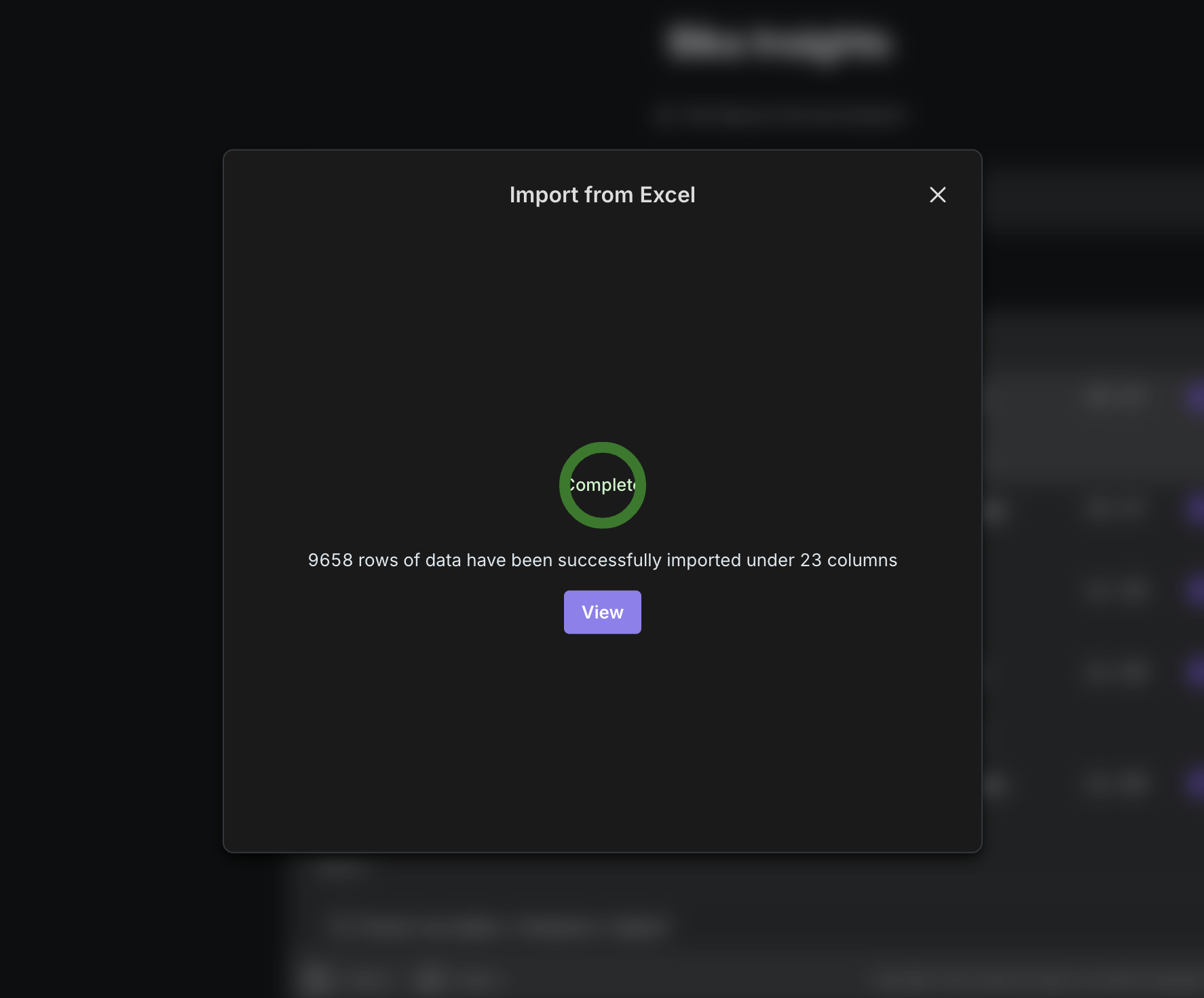
Excel Data Append Import (.xlsx/.csv)
For established databases, you may often need to add new records in batch. For example, importing new customer information monthly or regularly updating product prices. The append import mode is particularly suitable for this scenario as it keeps the original table structure unchanged and only adds new data records. For instance, when sales teams collect new sales leads weekly, they can easily add this new data to the existing customer management table through append import.
Steps:- Select the target database, click its menu bar, and select "Incremental Import from Excel"
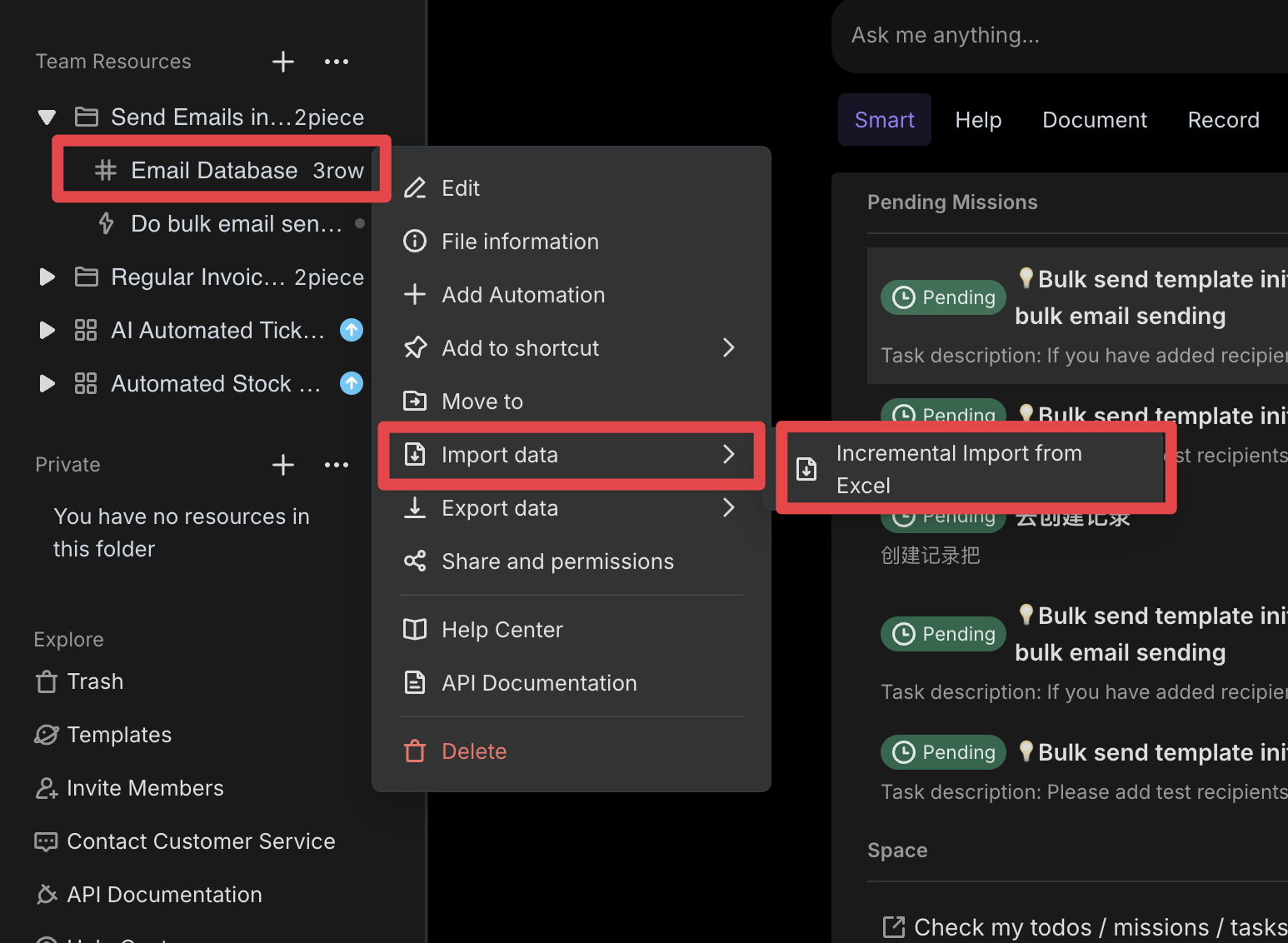
- To ensure data integrity and structural consistency, you need to first click to download the Excel template of the current database. The incremental data will be filled in the downloaded template.
Note: Do not change the headers in the template to avoid import failure.
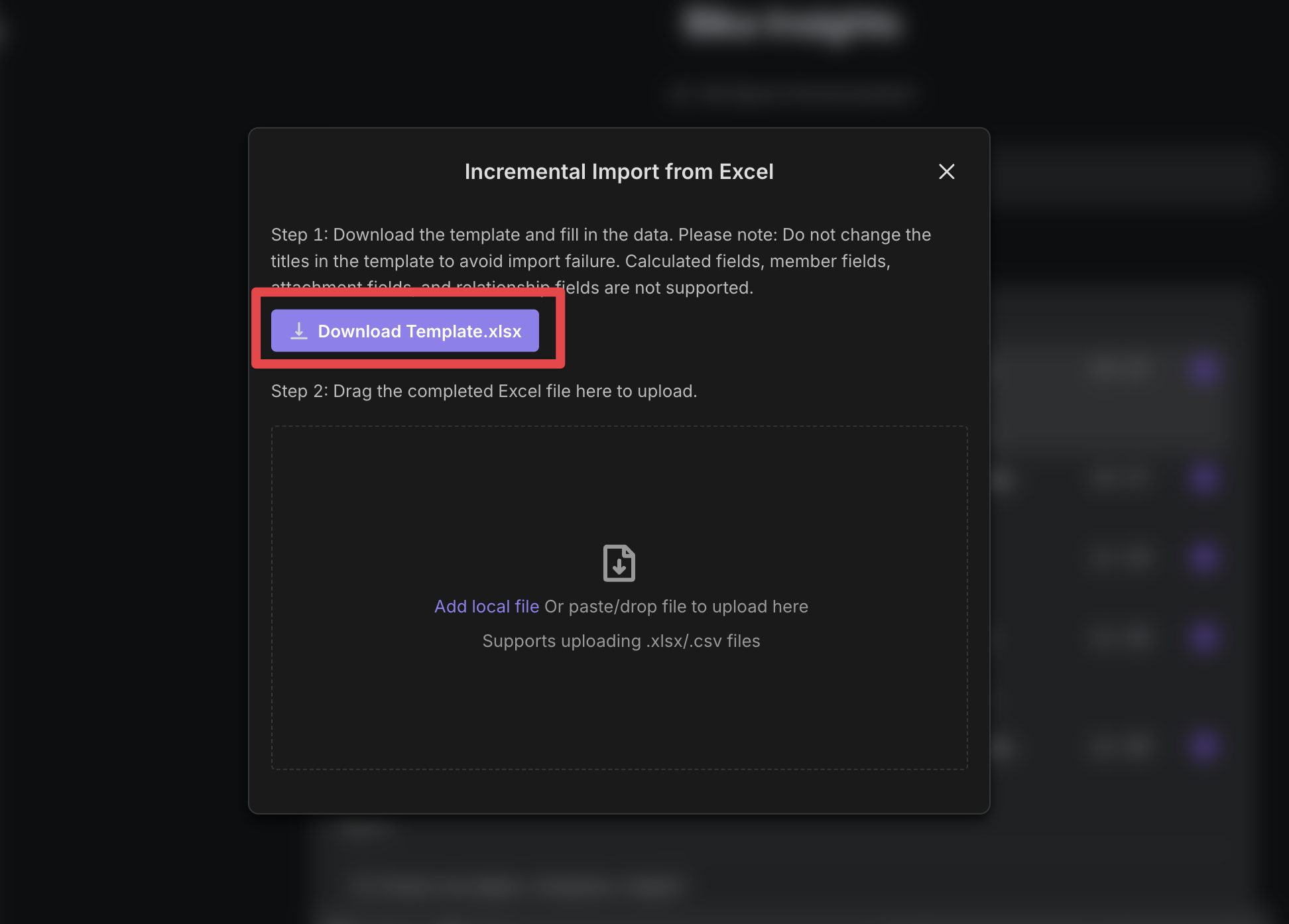
- Upload the completed Excel file and confirm whether the incremental import content is correct
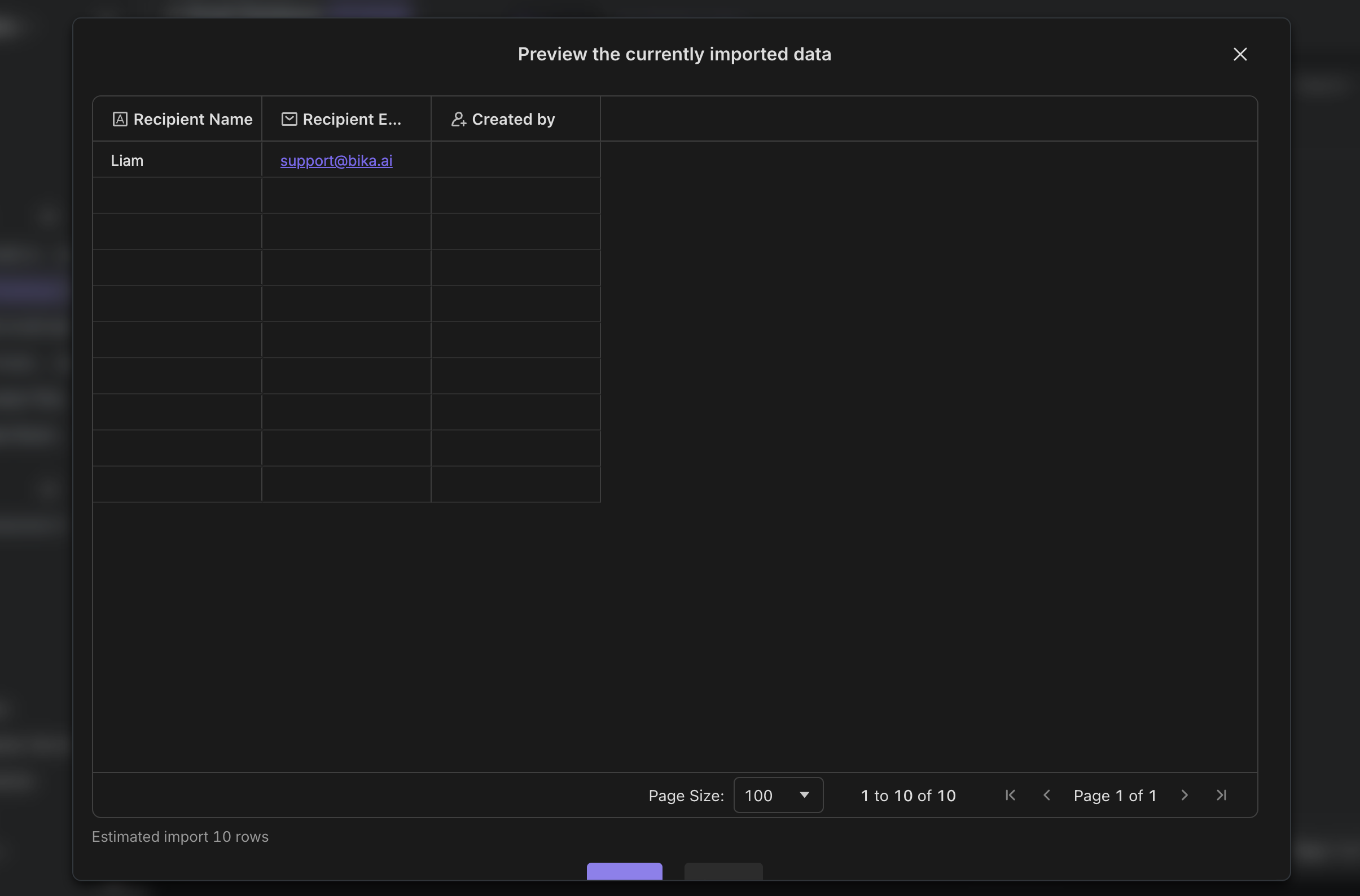
- Click "Import" and wait for the import to complete
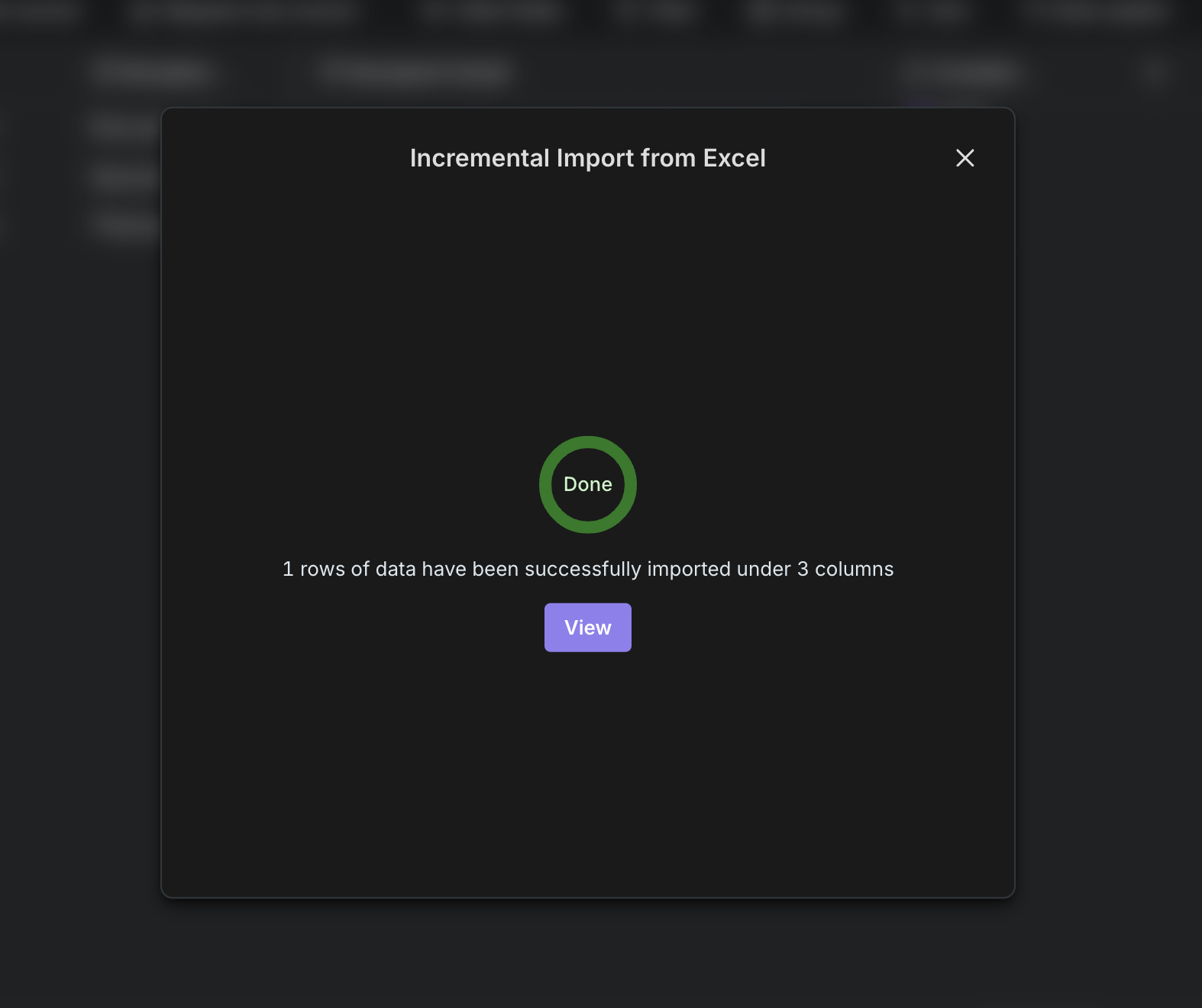
Full Import from Vika or AITable.ai
This feature is currently under construction and not yet available
Currently, the feature for full import from Vika or AITable.ai is under development and not yet open.
The design concept is that when you click to open the space settings, there will be a "Import All Data" button in the security or backup audit interface. After clicking this button, the system will prompt the user that this operation will overwrite all data under the current directory of a certain space, import it, and generate a subfolder.
Partial Import from Vika or AITable.ai
This feature is currently under construction and not yet available
The operation process is to click the plus sign at the top of the left sidebar, select import, then select import from Vika, and enter the Vika import interface. Then create a new integration, fill in the Vika and AITable data source's token, click confirm, and then enter the filtered resource ID. If no resource ID is filled in, a full import will be performed; if you only want to import certain node data, enter the corresponding resource ID. Due to data volume issues, the partial import function may be implemented as a background job.
Currently, imported attachments are only converted to text form; improvements are being made to support attachment imports.
Data Export
In Bika.ai, data export functions are just as flexible and practical as import. Whether for daily data analysis needs or system migration backups, they can be easily handled.
.bika Export
When you need to back up a complete business scenario or share solutions between teams, you should choose to export as a .bika file. For example, if you've completed the development of a customer management solution in a test environment and need to deploy it to a production environment, you can use this method to export the entire solution.
Steps:- Select the resource you need to export, click its menu bar, and select "Export .bika File"
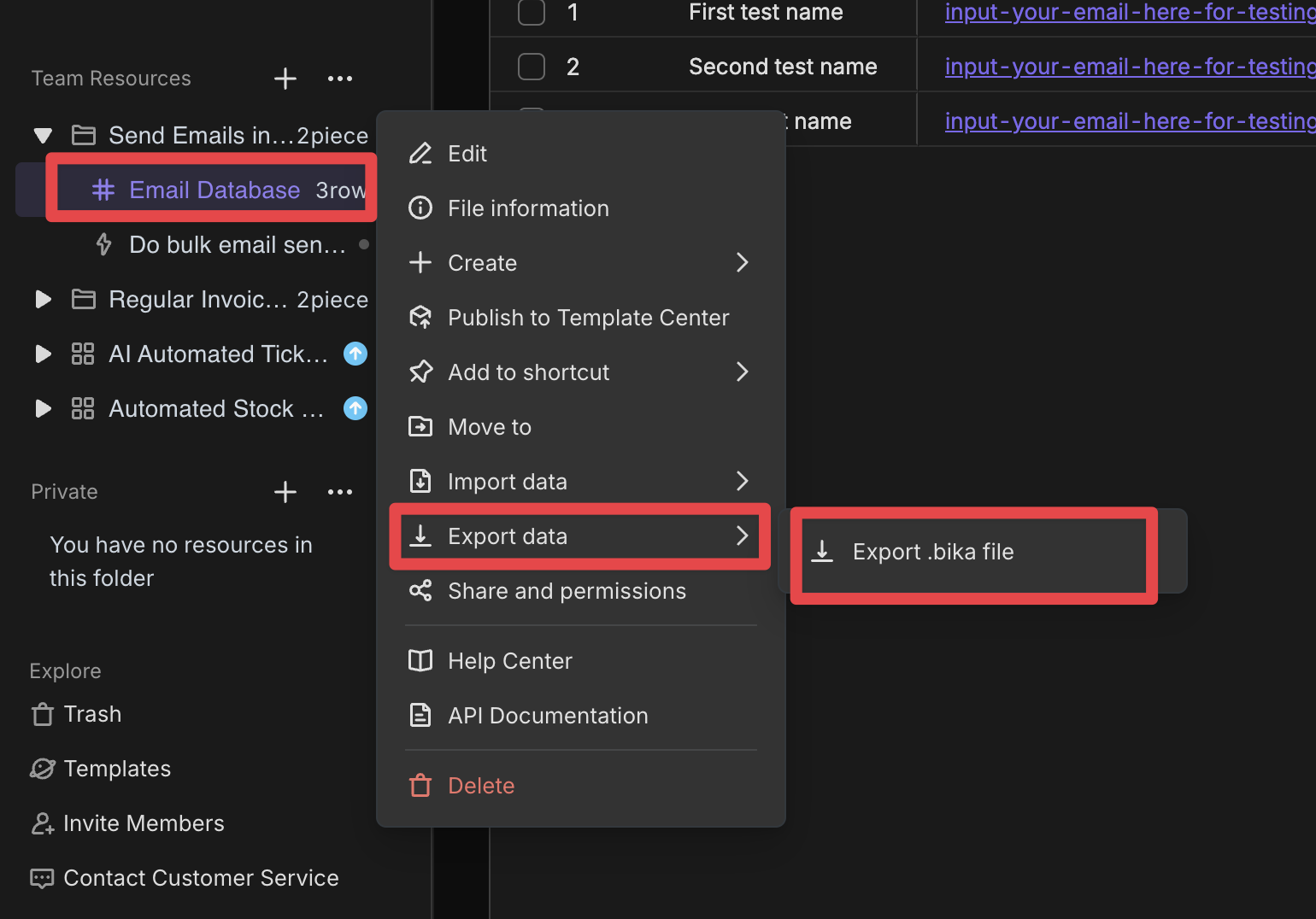
- If you need to export the records in the database together, you need to check the "Include Database Records" option; otherwise, only the field structure of the database will be exported during export, and the data will be empty
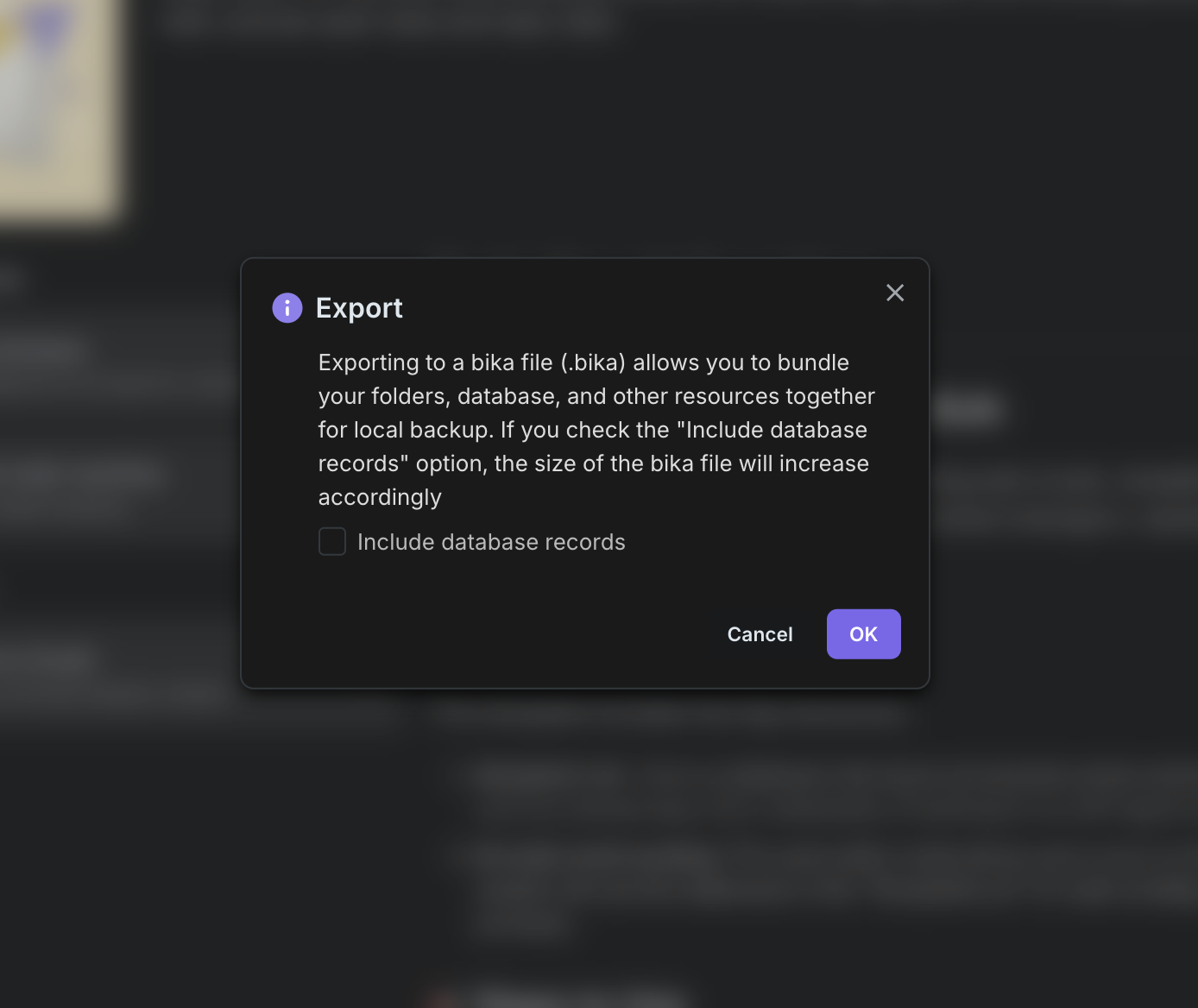
- Finally, click OK to export the resource as a .bika file
Excel Export
The most commonly used data sharing format. When you need to share data with colleagues, customers, or partners, or need to further process the data, Excel is the best choice.
Steps:- Select the target database, click "Export Data" in its menu bar, and select "Export as Excel File"
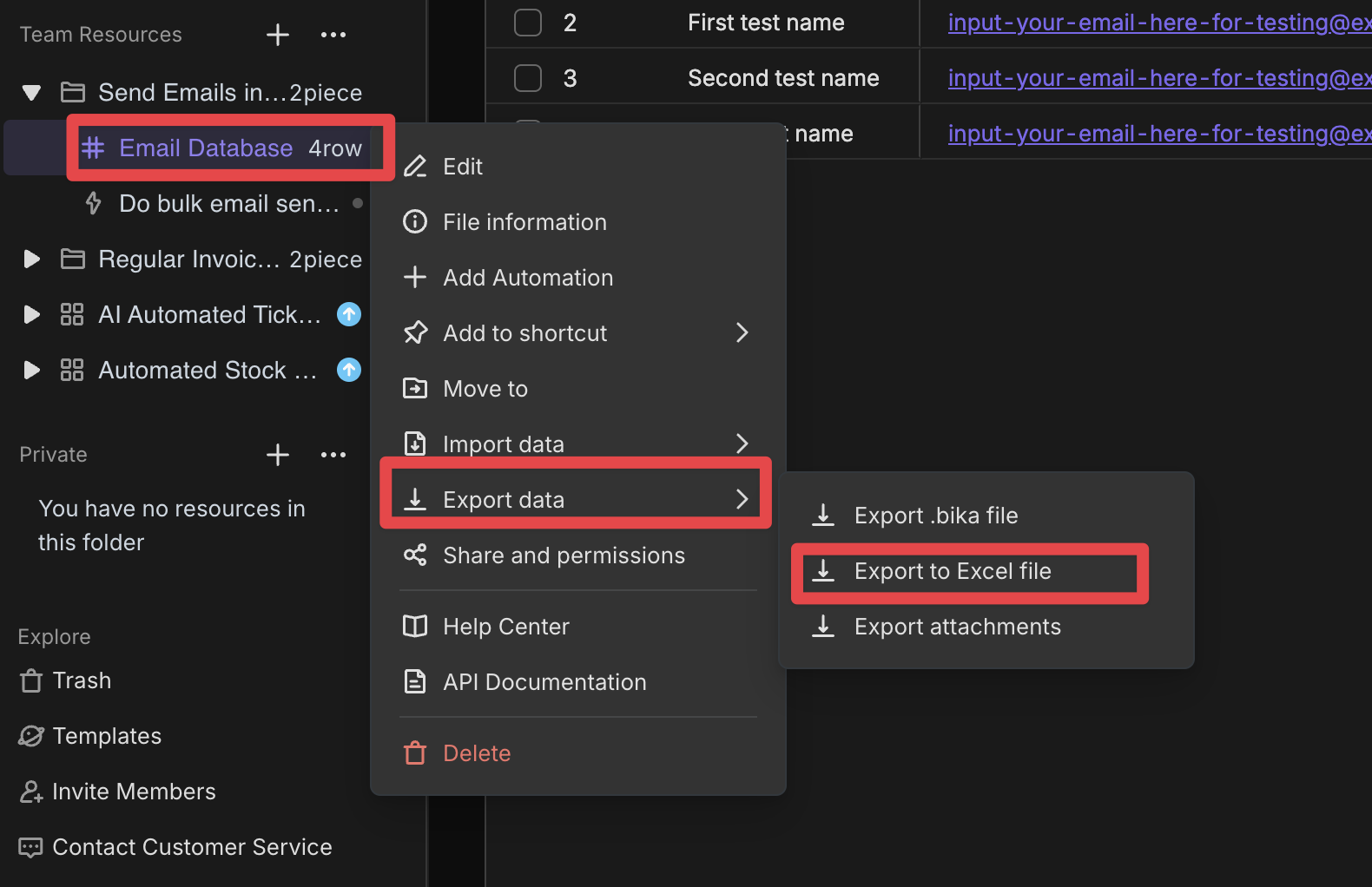
- Wait for the export to succeed, and the exported Excel file will be automatically downloaded
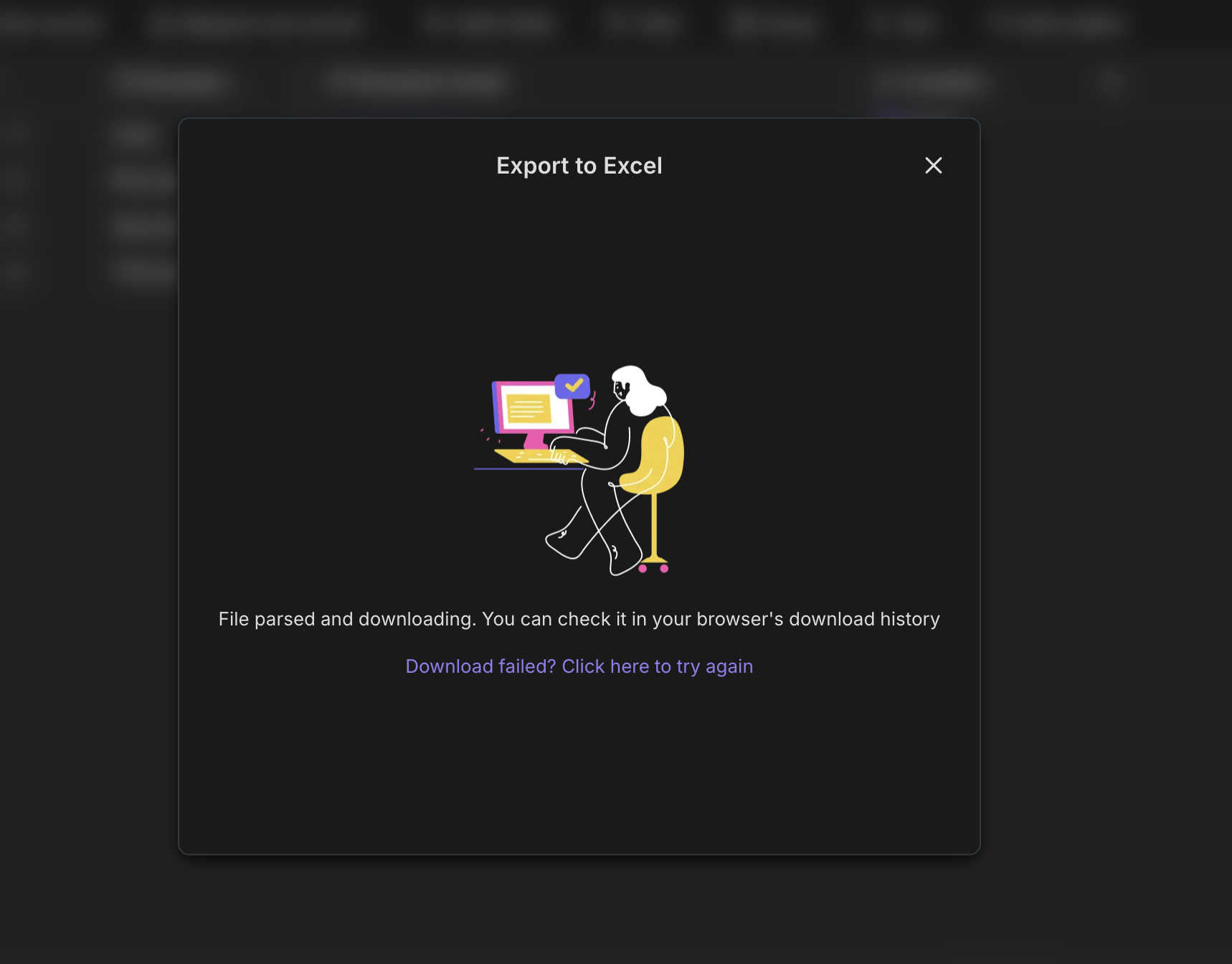
Full Backup Export
This feature is currently under construction and not yet available. It will be a paid feature.
Open space settings, click on the security panel, select "Full Backup Export."
Recommend AI Automation Templates


Coming soon


